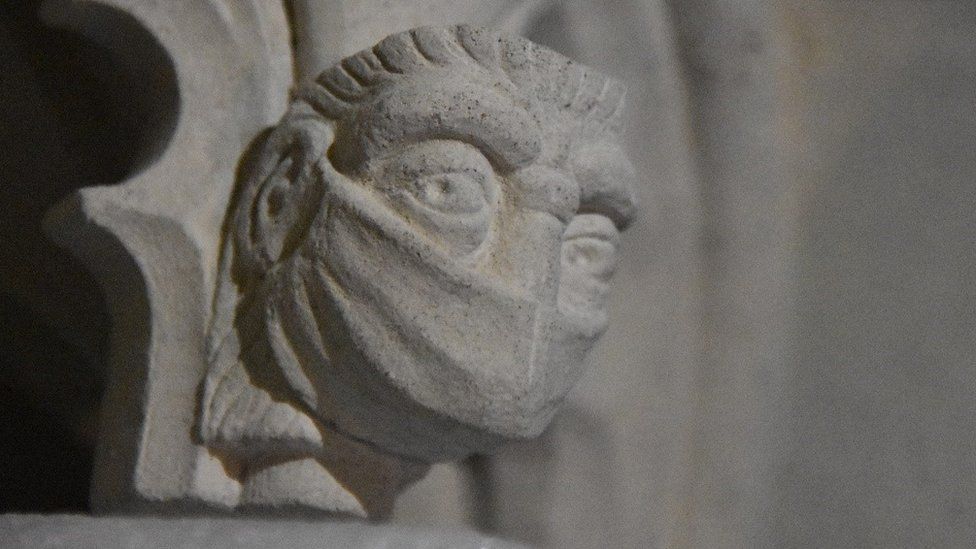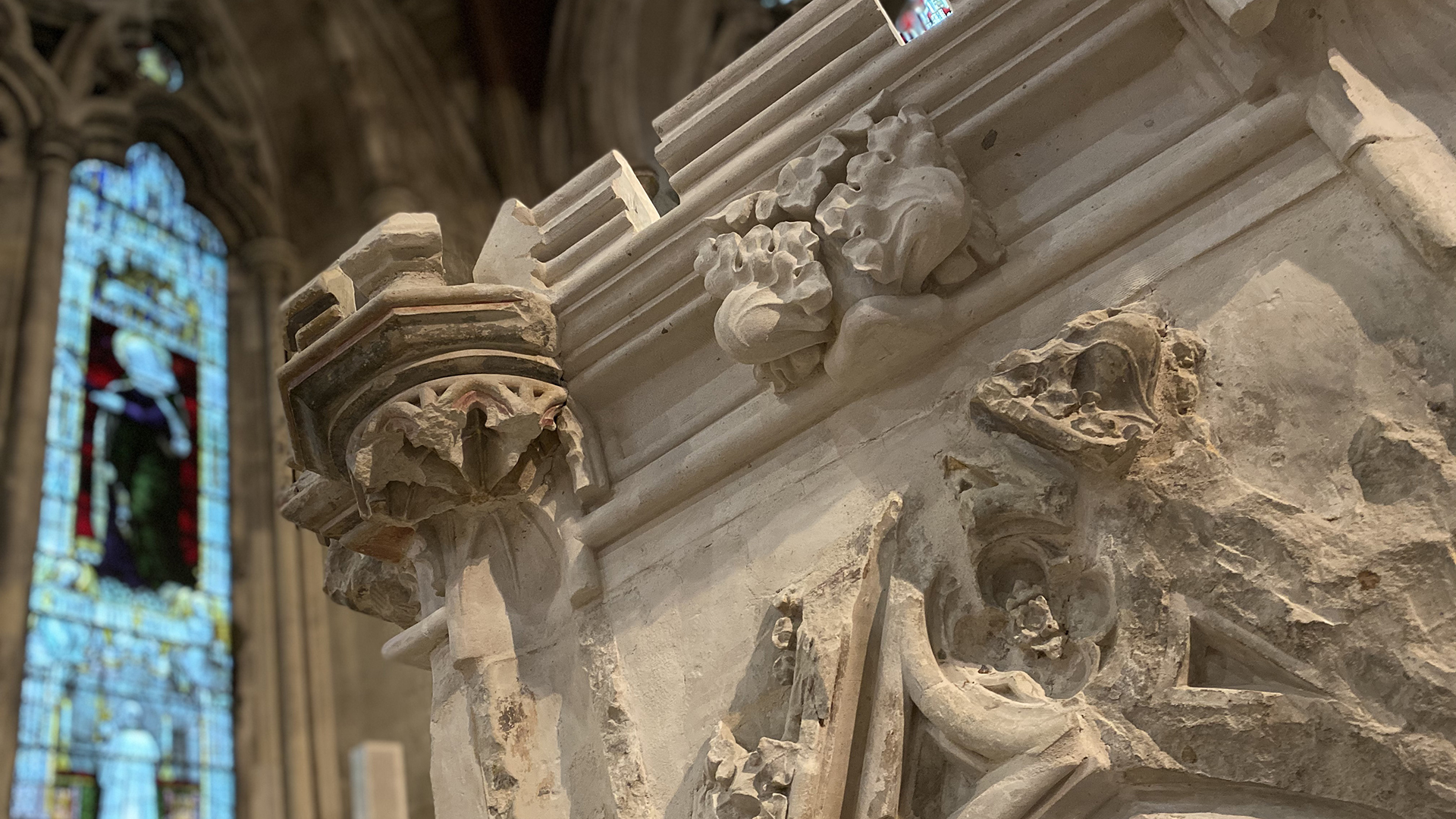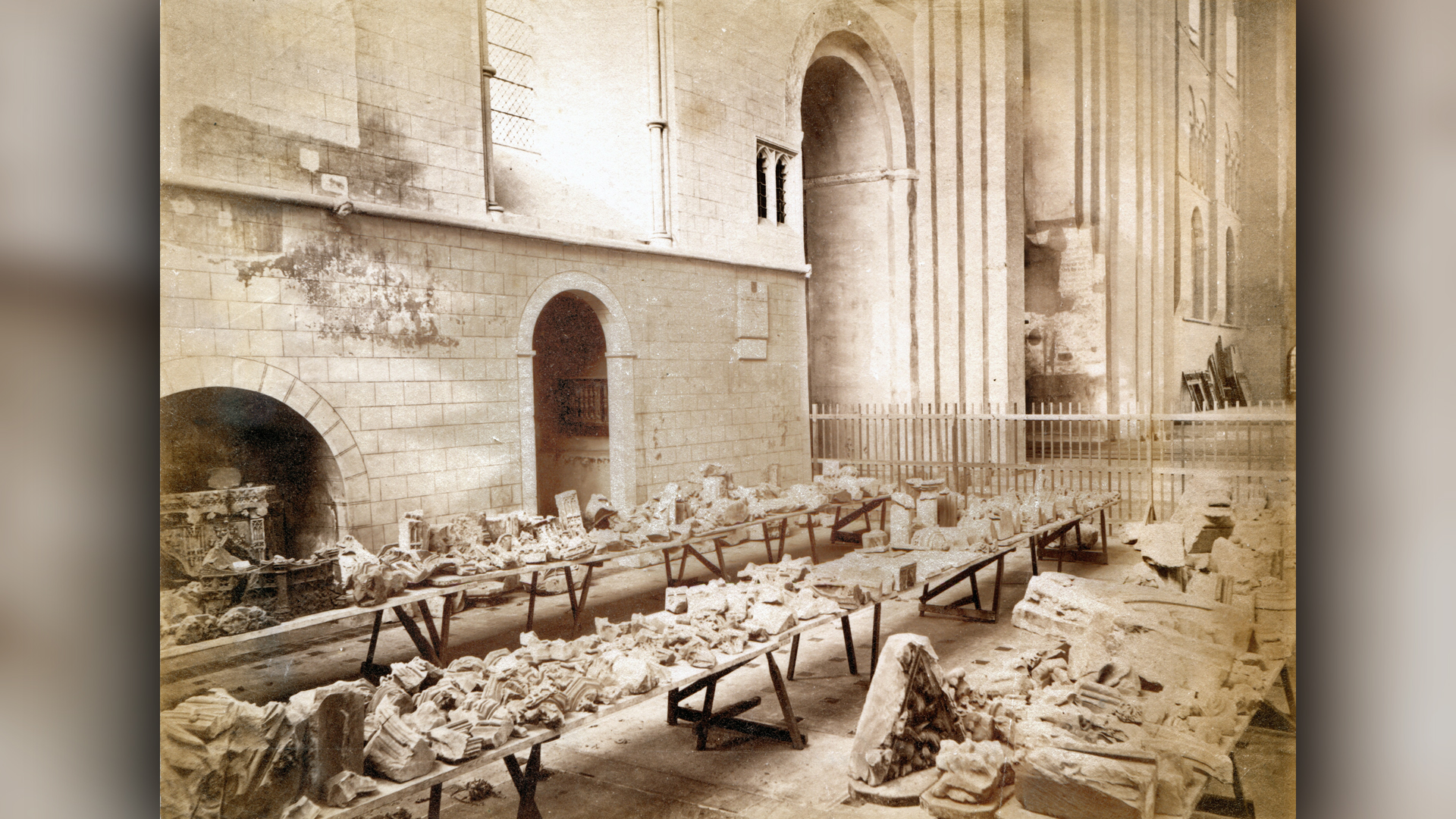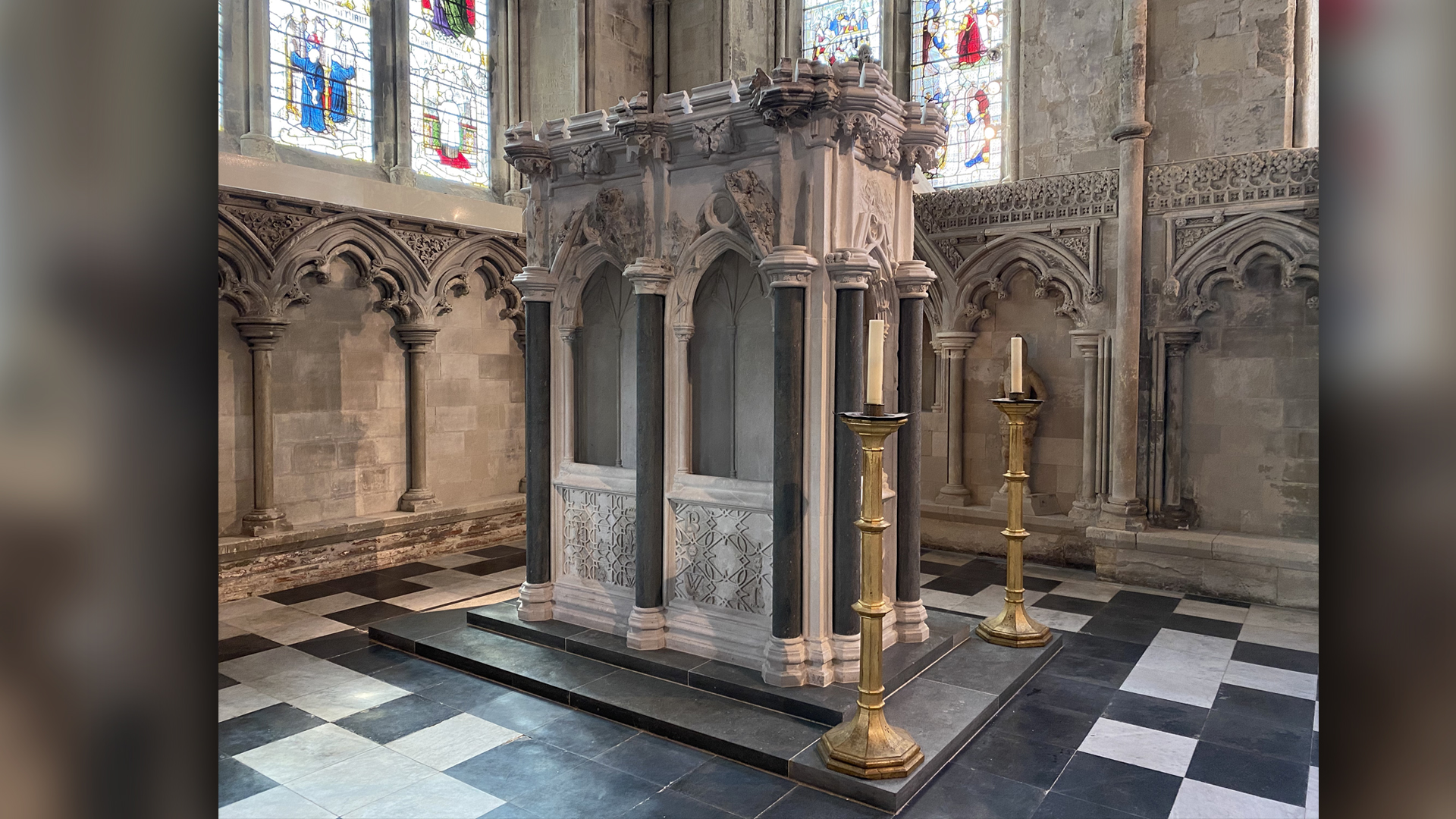Medieval shrine gets stone carving of face wearing a COVID-19 mask
Restoration work in the shrine of St. Amphibalus began prior to the COVID-19 pandemic, in 2019.

A historic cathedral in the United Kingdom recently renovated a 14th-century shrine with an update that acknowledges the COVID-19 pandemic: a carved mask covering a stone face.
St. Albans Cathedral in Hertfordshire, England, is Britain's oldest site of continuous Christian worship. Construction began in the late 11th century on the burial location of the Christian martyr Alban, Britain's first saint, and was completed in 1115, according to the St. Albans website. The renovated shrine, added to the cathedral in 1350, honors the early Christian saint Amphibalus, and it's one of two shrines in the cathedral (the other, added around 1308, commemorates St. Alban).
In addition to repairing and rebuilding the damaged parts of the shrine, stoneworkers added the new carving to commemorate the health crisis that transformed the world in 2020 and 2021, St. Albans representatives said in a statement. Now, the shrine features a new face — but only the eyes are visible. The rest of the features are hidden under a protective face mask, a sight that has become all too familiar worldwide during the COVID-19 pandemic.
Related: 20 of the worst epidemics and pandemics in history
"This tiny little figure on the corner of the shrine of St. Amphibalus will be an important reminder for centuries to come of the events of the past year," Reverend Abi Thompson, sub-dean of St. Albans, tweeted on May 8.
St. Alban lived during the third century and was executed after helping Amphibalus — a Christian priest — escape from Roman authorities. The Romans later captured and killed Amphibalus, according to the cathedral's website.
"Legend recounts that Alban performed miracles on the way to his execution," according to the British Library. "When Alban was decapitated, his executioner's eyes fell out," read an account in a 13th-century illuminated manuscript.
Sign up for the Live Science daily newsletter now
Get the world’s most fascinating discoveries delivered straight to your inbox.

Shrines in medieval cathedrals held relics of martyred saints. They were important destinations for Christian pilgrims, many of whom traveled great distances to pray at the sacred sites for blessings, forgiveness and healing, according to restoration experts at Skillington Workshop in the U.K. who repaired the damaged shrine and carved the new mask-wearing face.
However, many such shrines were damaged or destroyed during the English Reformation in the 16th century, and this included the shrines at St. Albans. Broken pieces of these shrines were found during a cathedral restoration in 1872, and they were reconstructed in the early 1900s. But while St. Albans' shrine was entirely rebuilt in the 1990s, St. Amphibalus' shrine "remained looking rather forlorn," according to Skillingtons.

However, many such shrines were damaged or destroyed during the English Reformation in the 16th century, and this included the shrines at St. Albans. Broken pieces of these shrines were found during a cathedral restoration in 1872, and they were reconstructed in the early 1900s. But while St. Albans' shrine was entirely rebuilt in the 1990s, St. Amphibalus' shrine "remained looking rather forlorn," according to Skillingtons.
Conservation of the shrine began in June 2019, with a focus on restoring missing elements in new stone (work on the project was briefly suspended in 2020 due to the pandemic). Only about 55% of the original stone remained, which presented restorers with "a really exciting opportunity for new carving," Skillingtons representatives wrote. Carvers also added a distinctly modern touch to the medieval shrine: "a face wearing a face mask to commemorate the shrine's restoration project taking place during the pandemic," cathedral representatives said.

With both of the cathedral's shrines now fully restored, St. Albans is preparing to unveil the shrine on May 17 and launch a new pilgrimage route in June, tracing a path from Redbourn, the site of St. Alban's martyrdom, to the shrine's new location in the cathedral's Chapel of the Four Tapers.
"The masked figure reminds us that the history of St. Albans stretches forwards as well as backwards," Reverend Thompson said in a statement. "Pilgrims will be able to mark the latest chapter in the history of this Cathedral alongside Amphibalus and Alban, who were there at the very beginning," the reverend said.
Originally published on Live Science.

Mindy Weisberger is an editor at Scholastic and a former Live Science channel editor and senior writer. She has reported on general science, covering climate change, paleontology, biology and space. Mindy studied film at Columbia University; prior to Live Science she produced, wrote and directed media for the American Museum of Natural History in New York City. Her videos about dinosaurs, astrophysics, biodiversity and evolution appear in museums and science centers worldwide, earning awards such as the CINE Golden Eagle and the Communicator Award of Excellence. Her writing has also appeared in Scientific American, The Washington Post and How It Works Magazine. Her book "Rise of the Zombie Bugs: The Surprising Science of Parasitic Mind Control" will be published in spring 2025 by Johns Hopkins University Press.









